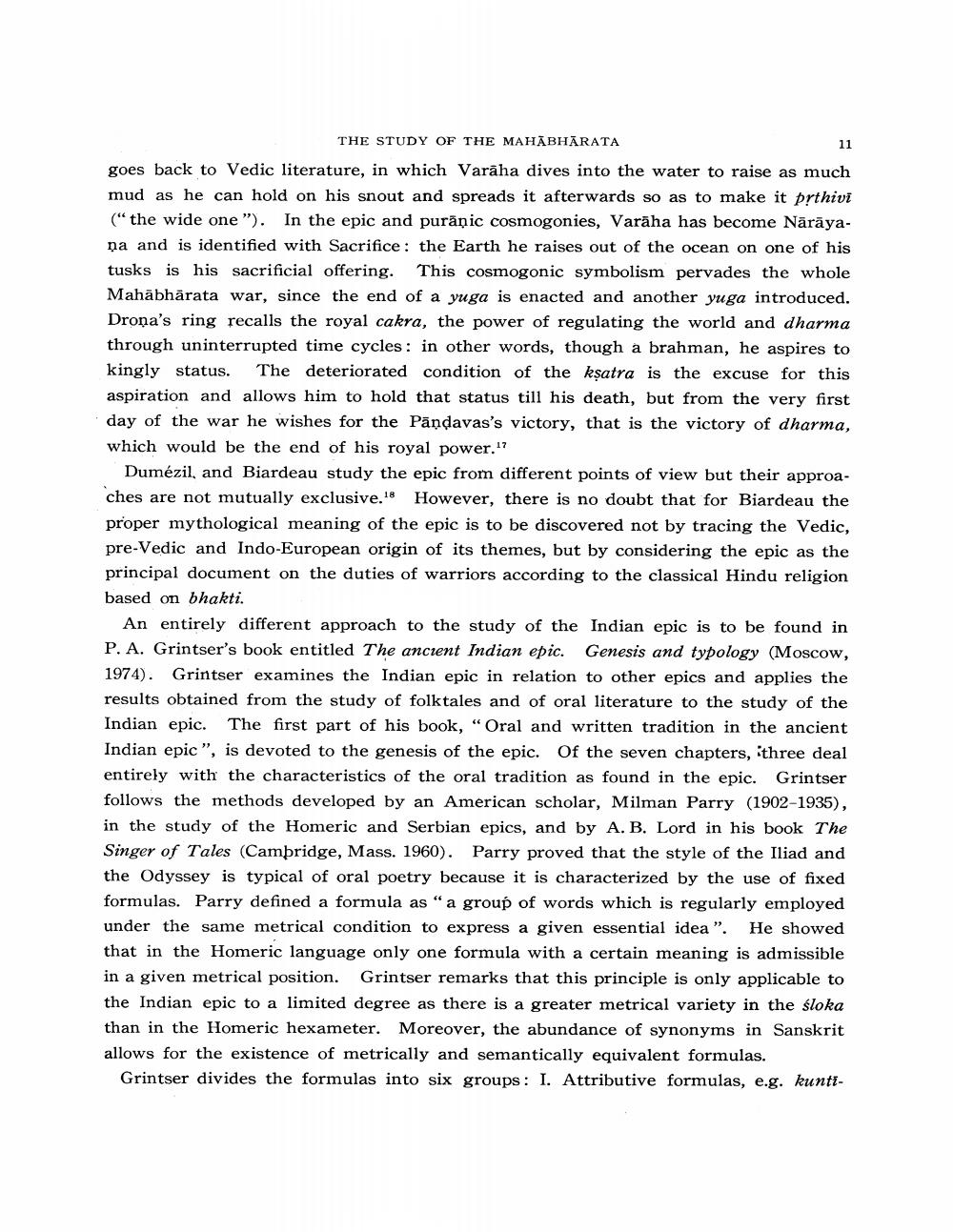________________
11
THE STUDY OF THE MAHĀBHARATA goes back to Vedic literature, in which Varāha dives into the water to raise as much mud as he can hold on his snout and spreads it afterwards so as to make it prthivi (“the wide one"). In the epic and purāņic cosmogonies, Varāha has become Nārāyana and is identified with Sacrifice : the Earth he raises out of the ocean on one of his tusks is his sacrificial offering. This cosmogonic symbolism pervades the whole Mahābhārata war, since the end of a yuga is enacted and another yuga introduced. Drona's ring recalls the royal cakra, the power of regulating the world and dharma through uninterrupted time cycles : in other words, though a brahman, he aspires to kingly status. The deteriorated condition of the ksatra is the excuse for this aspiration and allows him to hold that status till his death, but from the very first day of the war he wishes for the Pandavas's victory, that is the victory of dharma, which would be the end of his royal power."?
Dumézil, and Biardeau study the epic from different points of view but their approaches are not mutually exclusive. However, there is no doubt that for Biardeau the proper mythological meaning of the epic is to be discovered not by tracing the Vedic, pre-Vedic and Indo-European origin of its themes, but by considering the epic as the principal document on the duties of warriors according to the classical Hindu religion based on bhakti.
An entirely different approach to the study of the Indian epic is to be found in P. A. Grintser's book entitled The ancient Indian epic. Genesis and typology (Moscow, 1974). Grintser examines the Indian epic in relation to other epics and applies the results obtained from the study of folktales and of oral literature to the study of the Indian epic. The first part of his book, "Oral and written tradition in the ancient Indian epic", is devoted to the genesis of the epic. Of the seven chapters, three deal entirely with the characteristics of the oral tradition as found in the epic. Grintser follows the methods developed by an American scholar, Milman Parry (1902-1935), in the study of the Homeric and Serbian epics, and by A. B. Lord in his book The Singer of Tales (Cambridge, Mass. 1960). Parry proved that the style of the Iliad and the Odyssey is typical of oral poetry because it is characterized by the use of fixed formulas. Parry defined a formula as “a group of words which is regularly employed under the same metrical condition to express a given essential idea". He showed that in the Homeric language only one formula with a certain meaning is admissible in a given metrical position. Grintser remarks that this principle is only applicable to the Indian epic to a limited degree as there is a greater metrical variety in the śloka than in the Homeric hexameter. Moreover, the abundance of synonyms in Sanskrit allows for the existence of metrically and semantically equivalent formulas.
Grintser divides the formulas into six groups: I. Attributive formulas, e.g. kunti




